Customer Services
Copyright © 2025 Desertcart Holdings Limited
Desert Online General Trading LLC
Dubai, United Arab Emirates


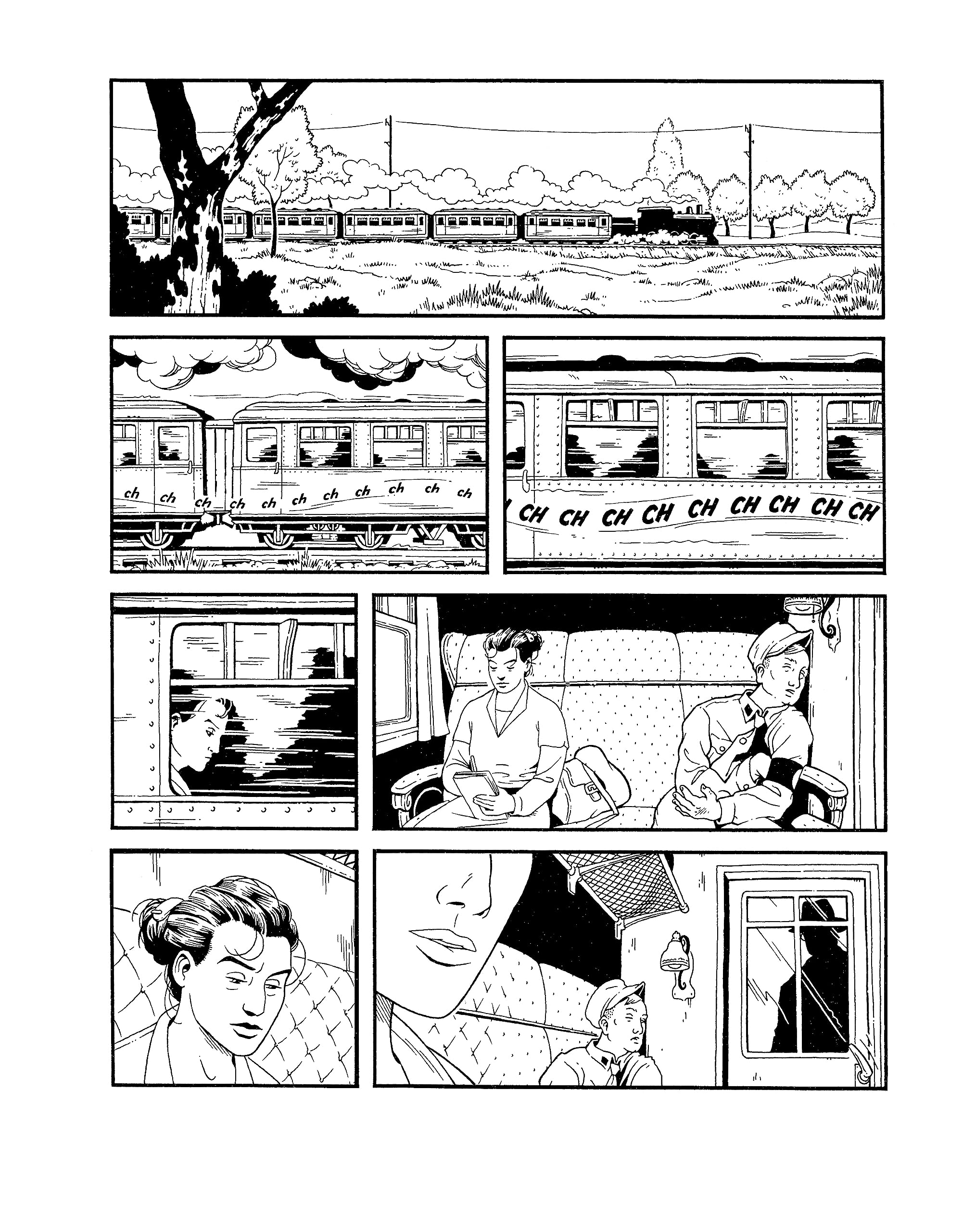
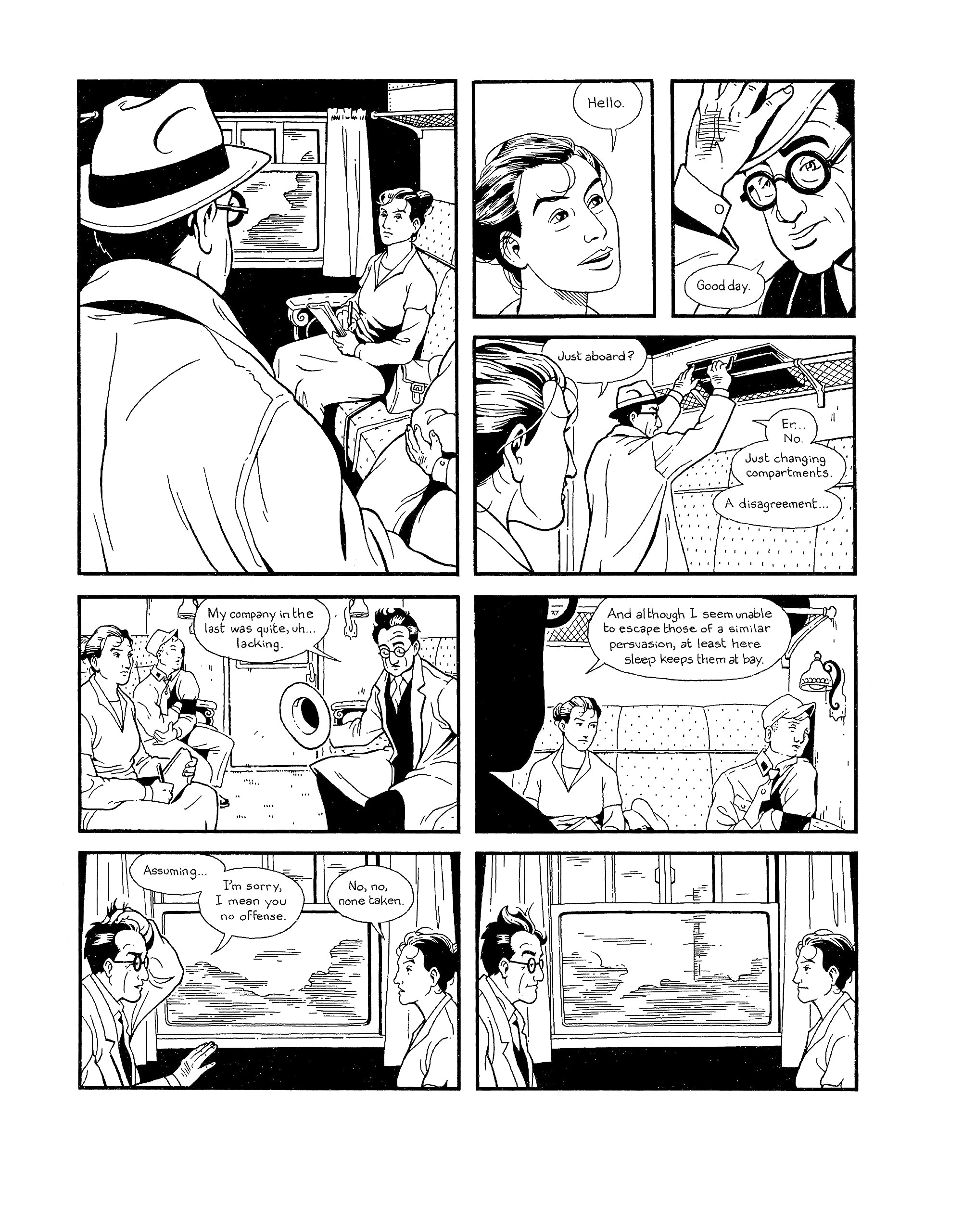
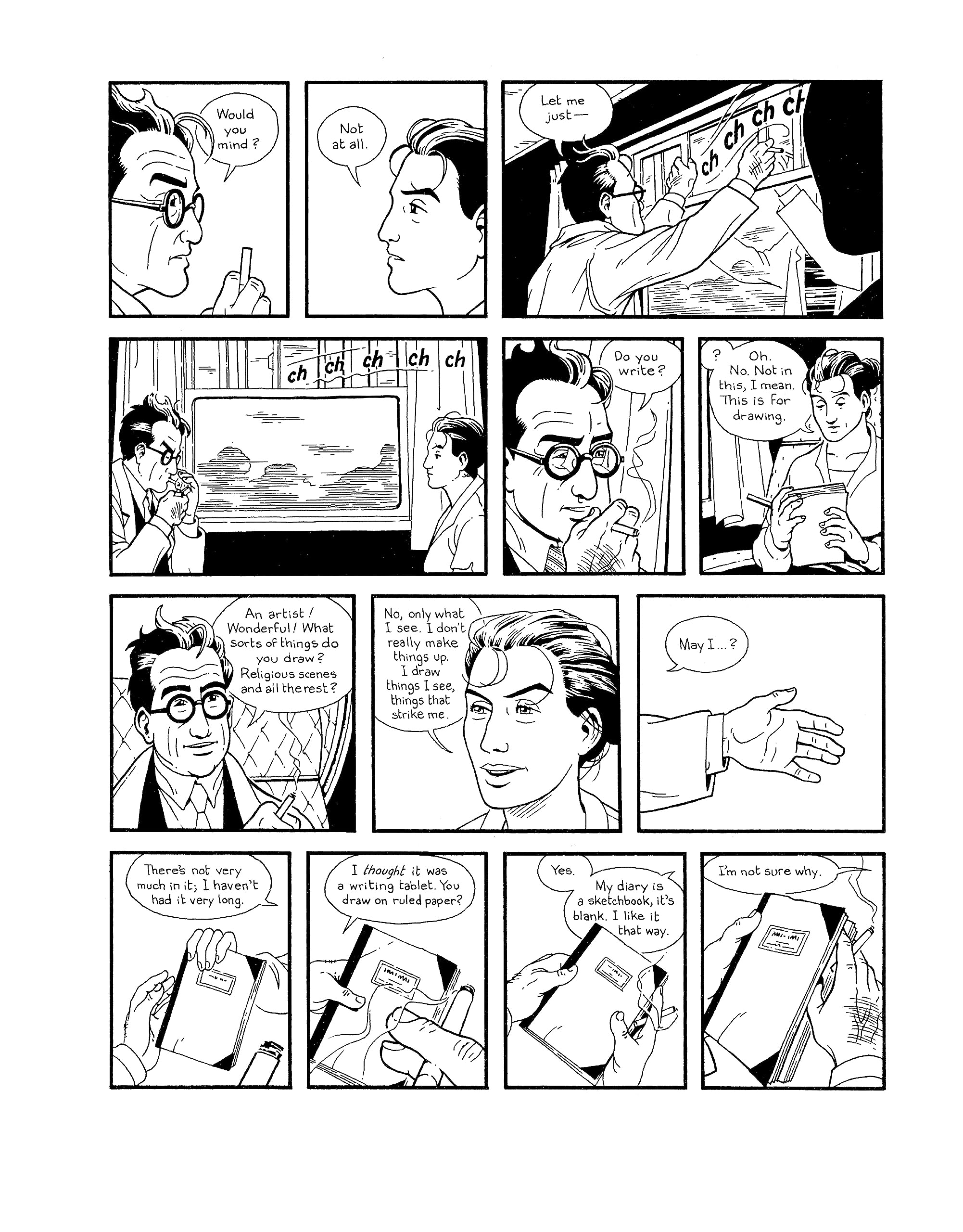

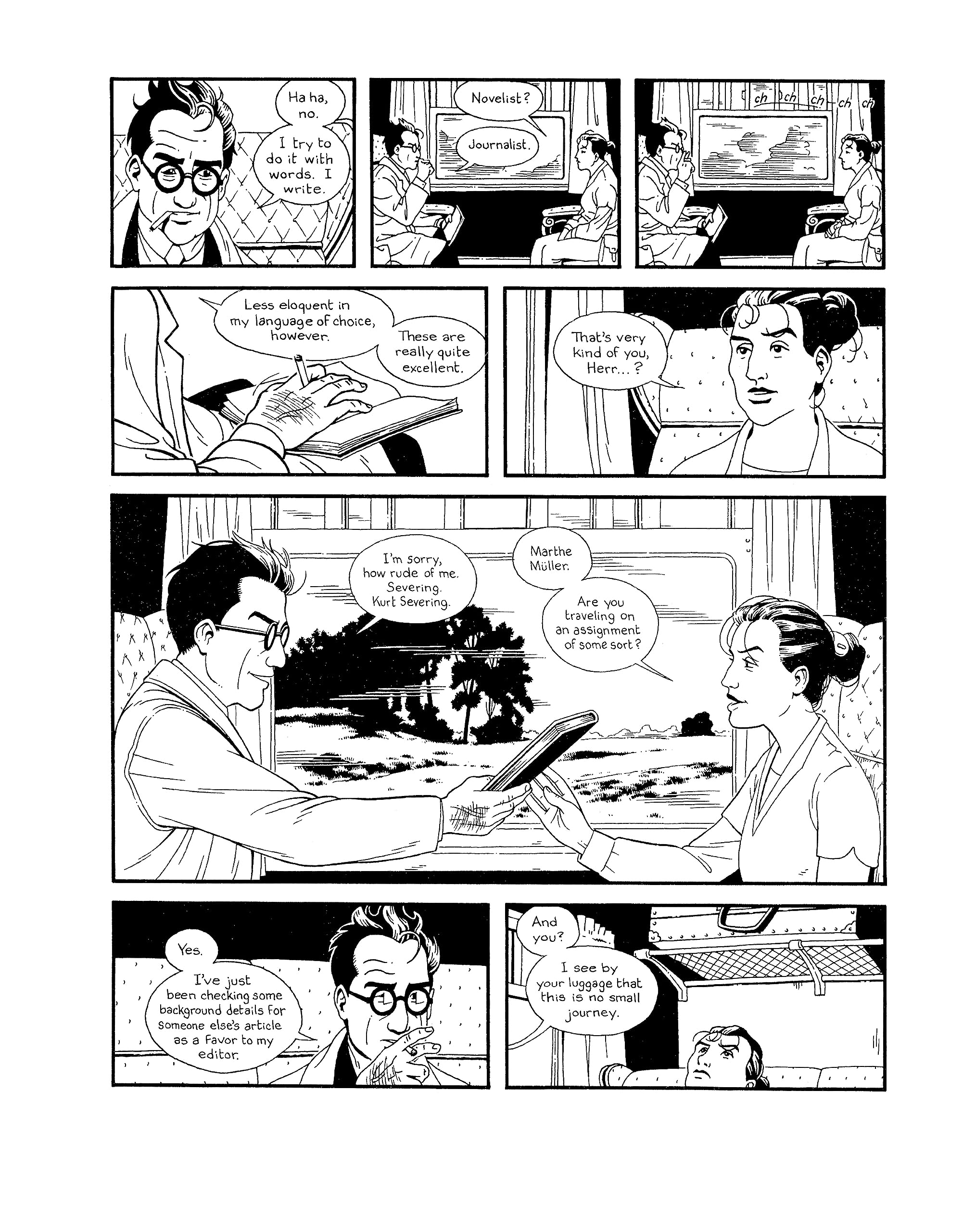
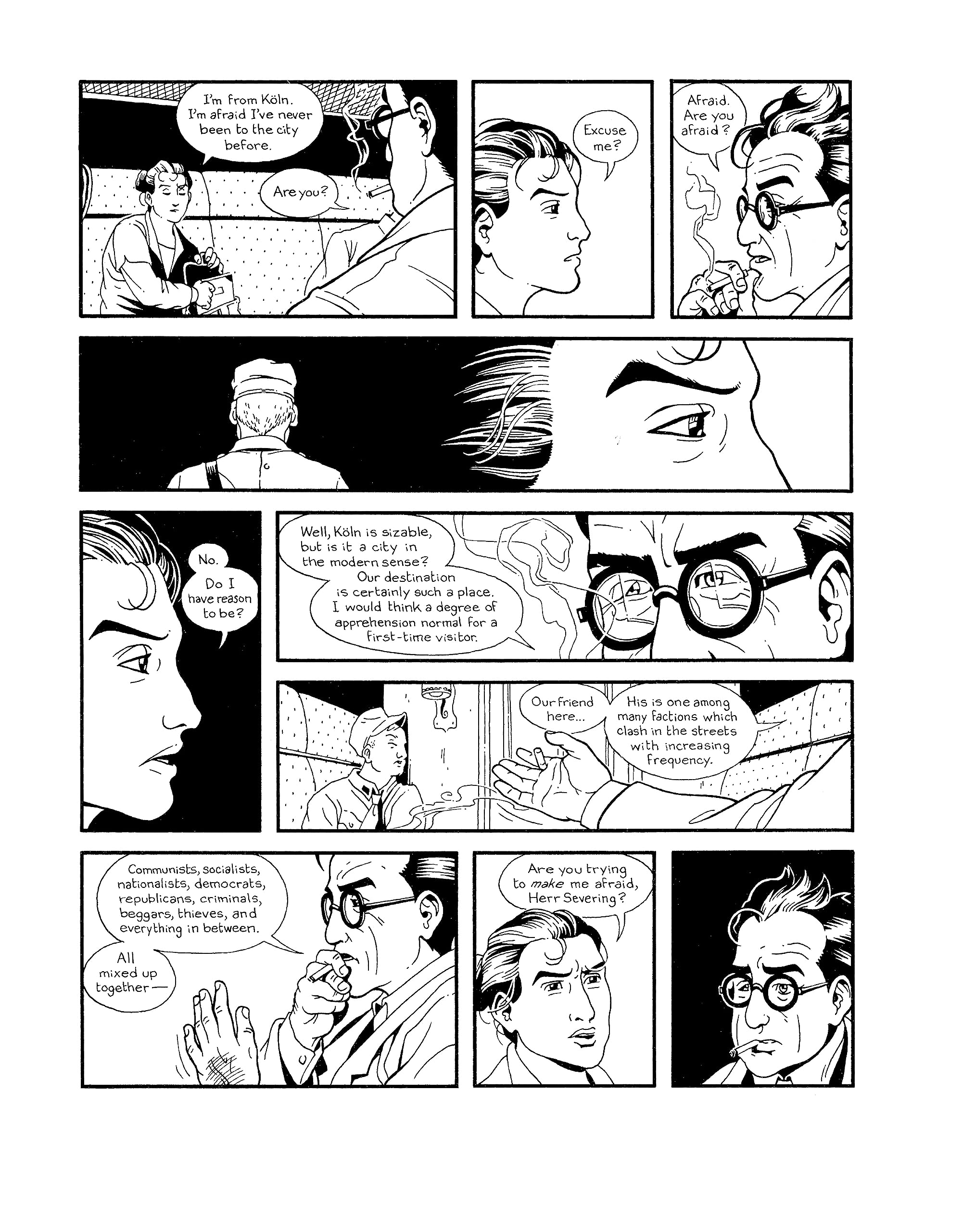
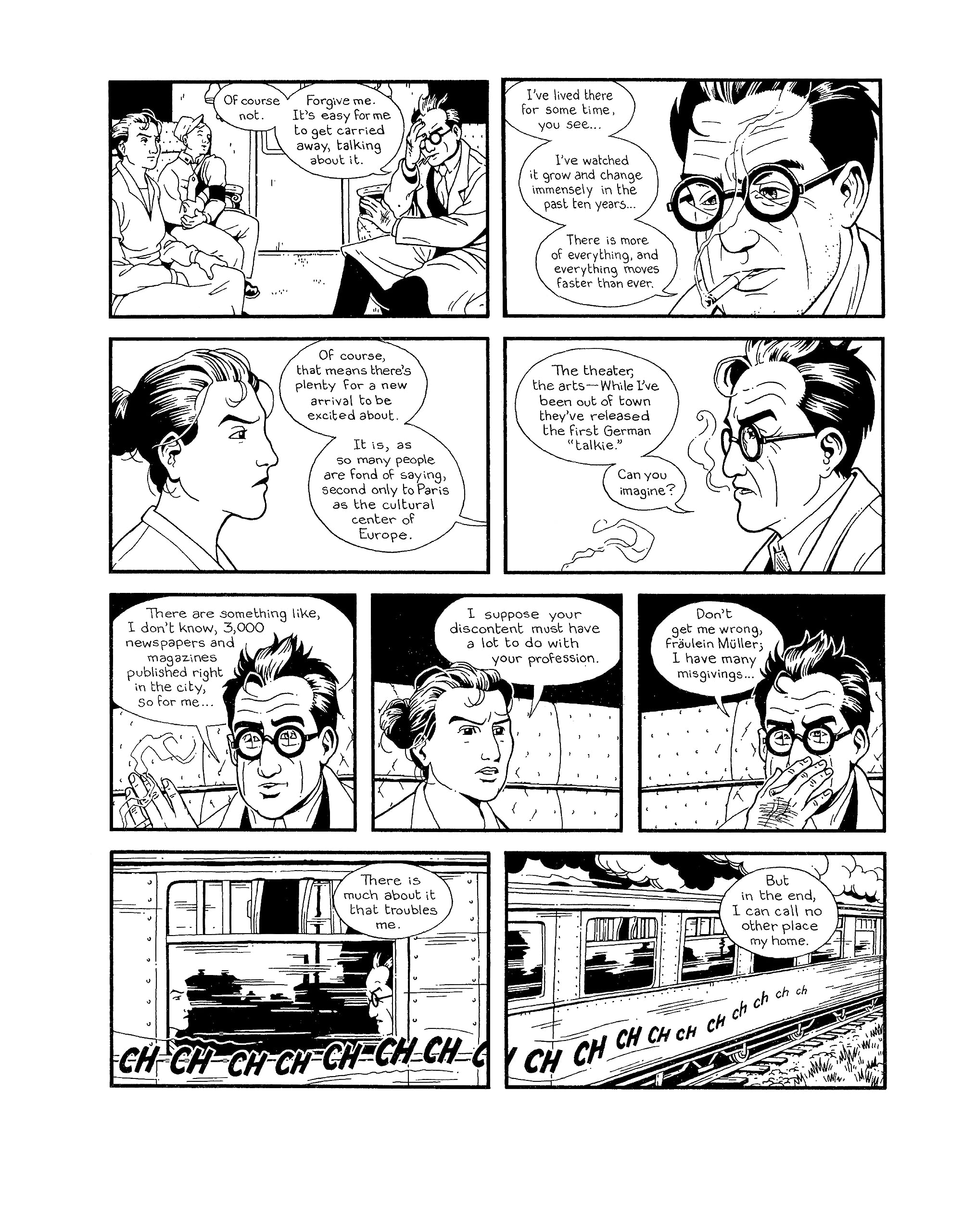
Full description not available
L**N
Comics-vérité view of pre-war Berlin
Throughout this hefty graphic novel I truly felt the artist's obsession to immerse himself body and soul in the political and social maelstrom of Weimar-era Berlin. Starting with a chance meeting between a young woman art student and a cynical older journalist on a train to Berlin in 1928, the book chronicles their up and down relationship, and her simultaneous affair with a female trans fellow student, interweaving these with several story threads from unrelated characters, to offer kind of a comics-vérité view of life in the years of the Nazi rise to power. We meet Communist and National Socialist agitators, working class Jews and gentiles, writers and artists, and an American jazz band, as well as some cameo appearances by real historical figures. The presentation is sober and matter-of-fact, bringing out the feel of the time and place so much more effectively than if the artist had tried to play up the drama.The historical events surrounding the characters are mentioned obliquely. Even Hitler's swearing into power is depicted without words, and if you don't know the history you'll only half-understand the political references. But rather than considering this a shortcoming, I thought it was an excellent decision on the artist's part, bringing in such events the way his characters would have viewed them, with no need for explanation.The black-and-white line artwork is richly detailed. People and cityscapes burst with character, but there is an austere, often cold, quality to the graphics which entirely serves the mood. I really admire the visual tricks the artist used to segue from one story thread to another.While each of the book's several story lines undergoes its own development and resolution, there isn't really a big dramatic theme running throughout. It's just Berlin 1928-1933. If that interests you, then Berlin is a gorgeous and fascinating worm's-eye view of a time and place, something to be picked up and read a bit at a time in order to enjoy the full flavor.
A**1
Wonderful Evocation of Weimar Berlin
As a fan of Berlin Alexanderplatz and Reginald Marsh’s work, I was of course attracted to the graphic novel Berlin. Its strength is its extensive, detailed illustrations of Jason Lutes’ exhaustive research on how Berlin appeared in the 1920s and early 1930s. No one is around to tell us if he hit the mark or not, but it sure looks like he did his homework over the 20 years he worked on it. Details of building facades in particular are amazing. He even drew specific streetcars matched to the right year and neighborhood. I particularly loved the evocation of bustling Potsdamer Platz. The editorial concept can be a bit convoluted; stories of 31 characters, primarily fictional, are told. Lutes’ goal (to me) seems to be a depiction (and teaching) of what actually happened in the Weimar Republic and how peoples’ lives were affected. No surprises here. There are no great characters like Doblin’s Franz Biberkopf. The book is a good way to get a sense of the history of Germany’s first tortured experiment with democracy. I really wish I had read this as comic installments (on bigger pages) as Lutes wrote them. That would have been really fun. It’s great to see a talented graphic novelist write a sweeping historical epic. I can’t wait to see what’s next.
G**N
plausible and engaging
I was skeptical at first. I teach literature and graphic novels have made it into the curriculum during my tenure, but I read a good review of this book in the NYRB and was compelled to check it out. It was worth the cost for the hardcover large edition. The writing is very good, and obviously concise as dictated by the GN format, but somehow the author makes a literary impact. Without the drawings, the writing might not be literary but there is a synergy in the two that works for me. The characters are well drawn in words and ink strokes and the setting, from 1918-1930s Berlin (if I'm remembering right) is compelling. It was a heady time in Germany and the author captures the vigor of the times, the idea that anything might happen, and the hard times facing many in Berlin society. The book captures the disturbing social movements that drew some in society into their whirlwinds and buffeted others, or worse. The book presents a variety of types, some of them interwoven in plot action: gays, journalists, poets, aristocracy, artists, the unemployed, Nazis, and so on. It's a plausible and engaging rendition of a very interesting particular time and place.
A**R
Like a storyboard for a great film
Loved the city symphony (à la Ruttman), the subtle visual marks that dentify each character, the Berliner dialect, the thought bubbles, the ironic framing - sequence shifts from each person's obsession to another's, visual riffs on music & dreams. German friends say it rings with truth. We know what is going to happen, but the characters don't - a parable for our polarized times.
A**R
Amazing!
Twenty years in the making, this hefty graphic novel is one of the greatest I've ever read, with such depth of emotion and compassion that's set against an epic historical backdrop. It piqued my curiosity to read more about the actual history of a country and historical figures I knew little about before reading this book. Highly recommended!
C**A
amazing graphic novel
I heard the author interviewed on NPR about a year ago and waited for the book to be published. When it finally was finally available it was even more interesting and captivating than I had hoped. The only thing I would say is that I had planned to read it with my 13 year old daughter and I will probably invite her to read it, but will definitely want to talk with her about it while she's reading it. There's some pretty complex material (sexuality) that she'll need some guidance with processing. In other words, just because it's a graphic novel, don't let it fool you into thinking that it's for a younger audience-- if anything this book merits extra support for adolescent readers.
I**A
City of Embers
This is a brilliant reconstruction of life in one of the world's greatest cities during the four years before President Paul von Hindenburg appointed Adolf Hitler as Chancellor on 30 January 1933. Behind the vibrant, liberal facade created by the middle class the smouldering embers of the First World War burst into flames. The two million dead, resentment at the treatment of ordinary soldiers by their officers, abandonment of disabled veterans, and the humiliation and poverty inflicted by the Treaty of Versailles are the bellows. We see the citizens becoming more polarised, some gravitating towards the Communists, others to the Nazis as they seek remedies for their deprivations.The characters whom Jason Lutes draws out of the crowd become real people, far from the stereotypes of Germans we are often presented with. A reader can become involved in their lives, fearing for those who have not opted to idolise Hitler. 'Berlin' also takes us well beyond Germany's capital city. It brings us to the present and to the poorly understood grievances which are polarising our own world. Let's hope fervently that the fate of Berlin and its inhabitants will not be repeated.
M**R
An outstanding work
One of the best graphic novels I’ve read. Every frame and panel is beautifully composed and drawn. The author makes black and white his strength. Ink never looked this good. The characters and backgrounds are precisely observed. The novel has numerous storylines that intersect cleverly. The narrative is poignant, gripping and historically fascinating. I think Berlin is close to being a graphic novel masterpiece. No wonder it took the author ten years to create.
S**K
One of My Favourite Graphic Novel of All Time!
I’ve spent the past 35 years reading graphic novels and comics of all genres and this has to be one of my favourites.I didn’t think Berlin would appeal to me - I’ve never been to the city & I’d never even heard of the author. But I’d read great things about it so I thought I’d give it a go. Berlin is an opus of more than 500 pages set in the late 1920s in the titular city, teeming with journalists and junkmen, artists and runaways, fiery rabble-rousers and burnt-out cases from the First World War, perceiving the city with their own nervous systems.At first glance the art work didn’t appeal to me but after a few pages I realised just how spectacular it is. Lutes is incapable of drawing a lazy panel. His scrupulous style, which is reminiscent of Herge, makes everything from the font of a store sign to a parlor wallpaper pattern worthy of study. Immerse yourself in every frame and panel and you'll get an opportunity to be transported back to another time and place. It’s about the lives of everyday people set in a bygone era - which might not appeal to those seeking escape in fantastical superhero stories but if you’re into history, a great story and a heartfelt and emotional journey I would recommend this. It truly is a spectacular and brilliant masterpiece.
L**N
A Very Worthwhile Purchase
'Berlin' by Jason Lutes took around twenty years to produce. It's a remarkable piece of work as far as Graphic Novels go and although the artwork is persistently in black & white, it's staggering how this works so effectively.If your curious about the history of Germany but more so, the inner history of Berlin from the 1920's into the 1930's, then you really cannot go wrong getting hold of what is one of the best Graphic Novels in existence.I thought for the price, it is a real bargain but it's also extremely well written with real intelligence and I wouldn't be surprised if at some future point the experience of reading it would be transferred into a film. As it is presently, 'Berlin' is fascinating and an amazing warning about how changes in history became disastrous over time.Highly recommended.
R**P
Poorly drawn characters
Since it is generally described as a work of genius, let me give a diverging opinion. It's absolutely the case that Lutes' panels of city scenes are magnificent, but his characterisation is poor. This is especially the case for female characters, who I frequently struggled to distinguish from each other. No doubt this contributed to the feeling I had that I wasn't really engaged with any of the characters as people, and that Lutes had only placed them to represent historical forces or social realities that he wanted to represent.
Trustpilot
1 week ago
2 weeks ago